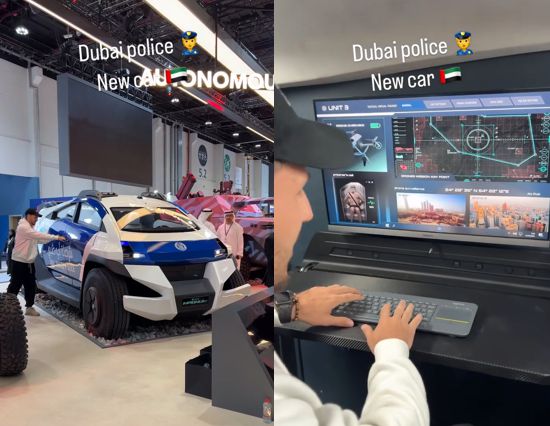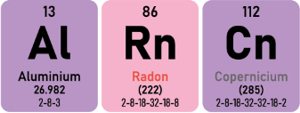Porn Discounts Sex Games Webcam Porno Porn Games Juegos XXX Hentai Games PornStar Games 3D Porn Tantaly Sex Doll Cupsland Sextoy
Live Sex Free Live Sex Free Sex Games Páginas Porno Rose Toy Celebrity Fappening Celebrity Sex Videos TikTok Porn Best OnlyFans
Live Sex Free Live Sex Free Sex Games Páginas Porno Rose Toy Celebrity Fappening Celebrity Sex Videos TikTok Porn Best OnlyFans
Published on 2025/04/02
TRIBE OF WOMEN SHOPPING AT SPAR

walter
Watching a group of Black women, seemingly from a tribal community, walking around completely naked—apart from a small loincloth—through the well-lit aisles of a SPAR supermarket feels surreal. Like National Geographic suddenly crashing into your local grocery store.
A scene that, in their context, might be the most natural thing in the world, but through Western eyes it triggers an instant brain glitch.
It’s a brutal reminder that what we call “normal” is just one version of many. And that there are places where the body isn’t hidden—it’s simply lived. Funny thing is, you’re not even sure what shocks you more: the nudity itself, or seeing it in a setting that, to you, plays by totally different rules.
ExtraBall
When you finally find love.
|
➡️ Let's do real, be real with Tantaly, the sex doll torso leader |
ExtraBall2
(Clicking on these links daily you support ALRNCN's work. They're collaborators or sponsors and, by visiting their sites, they like us even more)










ALIEN ENEMIES ACT & CECOT
Trump has once again sparked controversy by deporting 238 alleged members of the Venezuelan gang Tren de Aragua and 23 from El Salvador’s MS-13, despite an attempt by a U.S. judge to block the move. To justify his decision, he invoked the Alien Enemies Act of 1798, an archaic law that allowed him to send them directly to El Salvador.
There, they were transferred to CECOT, a maximum-security prison infamous for its extreme treatment of inmates. Additionally, the U.S. will pay El Salvador $6 million to house them for a year.
This decision has ignited a legal and ethical debate over whether Trump can use such an outdated law to push his agenda and whether these deportations were conducted lawfully. One thing is certain: for these 261 individuals, the "American Dream" is over, and their new reality behind bars won't be pleasant.

# Watch Videos
ExtraBall
Kisses!
ExtraBall2
(Clicking on these links daily you support ALRNCN's work. They're collaborators or sponsors and, by visiting their sites, they like us even more)










ABU DHABI POLICE ARE ALREADY LIVING IN 2050
Abu Dhabi Police just unveiled their latest patrol vehicle at Gitex Global 2024, and it looks like something straight out of the future: the Magnum MK1, an autonomous, armored, drone-equipped 4x4.
This cutting-edge vehicle is primarily electric but also has hybrid petrol support. It can reach speeds up to 150 km/h, accelerates from 0 to 100 km/h in just 5.4 seconds, and is bulletproof against ammunition up to 7.62 mm. It carries three officers and securely transports one detainee in a specially designed internal cell.
Among its most advanced features are integrated systems for audio, video, and vital-sign monitoring, autonomous off-road navigation, radio and cellular communication capabilities, surveillance drones, infrared cameras providing 360-degree vision, specialized lighting, advanced geolocation, anti-jamming protection, and even an internal workstation with a panoramic screen to manage operations directly from the vehicle.
This futuristic patrol car will be fully manufactured in Abu Dhabi and is expected to hit the roads officially by 2028—a real leap into the future for Emirati law enforcement.

# Watch Video
ExtraBall
Slow-motion of the day.
ExtraBall2
(Clicking on these links daily you support ALRNCN's work. They're collaborators or sponsors and, by visiting their sites, they like us even more)

























RECOMMENDED SITES
 Add your site
Add your site
- Entensity
- XRares
- BoobieBlog
- Babes & Bitches
- celeb-stalker.com
- Erotic Beauties
- drunkenstepfather
- Candid Teens
- Kanoni Net
 Add your site
Add your sitePorn Discount
💩 CrazyShit
🤪 eFukt
NudeChatGirls
👉🍑 Top XXX Pictures
Bingo Porno
Best Porn Blog Sites
Sex Games
Real Amateur Porn
MrPornGeek
CamBB.xxx
ChatSex.xxx
Comepollas
PornScn Free Porno
AI Girlfriend App

















HEROES WITHOUT CAPES
Not everyone reacts the same way to danger. Some freeze, others think about their own safety before taking action. But there are those who, without a second thought, throw themselves into danger when someone else is at risk.
The storm had turned the road into a raging river, and a car with a family inside was trapped in the current. The water was rising fast, the pressure against the vehicle increasing, and time was running out.
That’s when he sprang into action—without a thought for his own safety. He could have been swept away, he could have gotten trapped, but none of that crossed his mind. Only the children and their mother mattered. Just seconds after getting the entire family to safety, the car was swallowed by the current and dragged away.

# Watch video
ExtraBall
Britney is still going all out on her IG.
ExtraBall2
(Clicking on these links daily you support ALRNCN's work. They're collaborators or sponsors and, by visiting their sites, they like us even more)












MOTORPORN VOL68
There are machines that aren’t just driven—they’re felt. Engines that roar like they have a life of their own, bodies sculpted for desire, and exhausts spitting fire as if defying hell itself. This isn’t just speed; it’s a spectacle. A ritual of power, precision, and pure mechanical pleasure. Here, there are no limits—just a relentless passion for gasoline.
# Watch videos
ExtraBall
The slow-motion shot of the day.
ExtraBall2
(Clicking on these links daily you support ALRNCN's work. They're collaborators or sponsors and, by visiting their sites, they like us even more)











Contact
You can tell us whatever you want via email: [email protected]
If you prefer, you can use this contact form:
If you prefer, you can use this contact form:






THE FUTURE OF ROBOTS AND THE EMPLOYMENT DILEMMA
It’s becoming increasingly clear that androids will soon be part of our daily lives, taking on household chores, grocery shopping, and even jobs in factories, logistics, and construction. Automation is advancing with the goal of reducing costs and increasing profits, but this raises a major issue: if robots take over our jobs, where will we get the money to live? If too many people are unemployed, who will buy the products these companies produce?
There are two possible scenarios. One is the creation of a new economic model, where automation forces the implementation of a universal basic income to ensure financial stability for those who can no longer find traditional jobs. This way, consumer spending remains active, and the economy avoids collapse.
The other scenario is a transformation of the job market. Just like the Industrial Revolution eliminated some jobs but created many others, automation could generate new professions we can’t yet imagine. Humans might shift towards creative fields, tech-driven roles, or industries where empathy and human interaction remain irreplaceable.
What’s clear is that if we want a future where robots make life easier without triggering social collapse, we must rethink the economic model. Technology is progressing, but without a strategy for adaptation, the risk of a consumption crisis is real.

# Watch videos
ExtraBall
The slow-motion moment of the day.
ExtraBall2
(Clicking on these links daily you support ALRNCN's work. They're collaborators or sponsors and, by visiting their sites, they like us even more)










THE NEW PANGEA
vikingo
There is a geological theory suggesting that in about 200-300 million years, the movement of tectonic plates will once again merge the current continents into a supercontinent, similar to what happened with Pangea around 300 million years ago.
This concept is part of the supercontinent cycle, where landmasses drift apart and reunite over hundreds of millions of years due to continental drift. Geologists have proposed several possible scenarios for this future supercontinent, with some of the most discussed being:
Pangea Proxima: A supercontinent that would form in the same region as the ancient Pangea.
Novopangea: Would emerge if the Atlantic continues to expand while the Pacific closes, pushing continents into a new union pattern.
Aurica: Would form if the Indian Ocean disappears and the current continents shift toward the equator.
Amasia: In this scenario, North America and Asia would merge near the North Pole.
Although this is an extremely slow process, scientists can predict it by measuring the movement of tectonic plates. So, if the planet is still standing in 250 million years, we might once again have a single continent.

# Watch video
ExtraBall
Shall we take a walk?
ExtraBall2
(Clicking on these links daily you support ALRNCN's work. They're collaborators or sponsors and, by visiting their sites, they like us even more)































